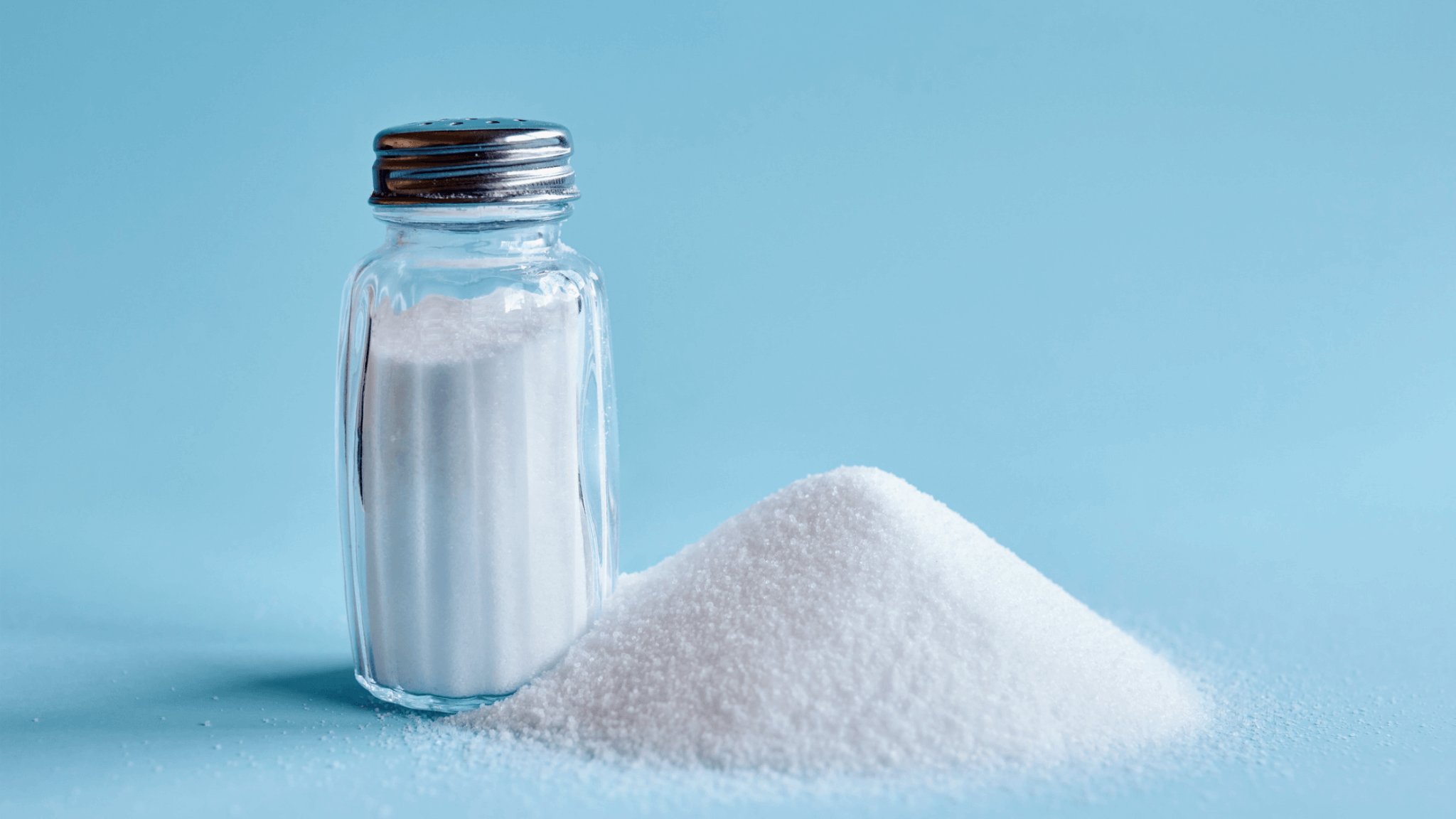Salt has long been vilified as a leading cause of high blood pressure and heart disease, but recent research suggests that the truth is more nuanced. Whether you want to improve your overall health, optimize athletic performance, or understand dietary needs, a balanced perspective on salt is essential.
Quick look
- The salt scare began with a study from the 1960s that linked excessive sodium intake to high blood pressure and heart disease.
- Current scientific evidence does not support common myths about salt, including that it causes high blood pressure and dehydration.
- Including the right amount of salt in your diet is essential for maintaining hydration, performance, and overall health.
- Poor diet and lifestyle choices, rather than salt itself, are the primary causes of sodium-related health issues.
The salt scare
For a long time, people believed salt was the enemy—and realistically, most people still do. The fear of salt began in the 1960s with a study by Lewis Dahl, who proposed that excessive sodium intake could lead to high blood pressure and heart disease.
Dahl’s study involved giving participants high doses of sodium (over 150 times the recommended daily amount), which increased blood pressure and overall blood volume. This research led to numerous myths that have become widespread, causing fear and confusion about salt consumption.
While there’s more to the salt story, the important point to remember is that the intake levels used in this study are far from the reality of most people. Recent studies have shown that moderate salt intake is not harmful but can be beneficial for health. Understanding these myths and their truths can help you make informed decisions about your diet.
6 myths about salt, debunked
1. Salt and sodium are the same
Many people believe that salt and sodium are interchangeable terms and are the same compound.
Truth: Salt and sodium are not the same. Salt, or sodium chloride, comprises 40% sodium and 60% chloride. Sodium, the mineral found in salt, is essential for maintaining fluid balance and nerve function. Not all sodium comes from salt; it can also be found in processed foods, vegetables, and dairy products. Put simply, salt contains sodium, but sodium is not salt. The body requires sodium to function optimally, but too much can be problematic.
Here’s an easy way to remember it:
- Sodium: What’s naturally found in food (mainly processed foods)
- Salt: What we put on our food
2. Salt causes high blood pressure
It’s commonly thought that consuming salt directly causes high blood pressure.
Truth: While excessive salt intake can raise blood pressure in some individuals, particularly those with salt sensitivity or hypertension, it does not affect everyone equally. Studies have shown that moderate salt consumption—around 2,300 milligrams per day for adults—is safe for most people. Factors such as diet, physical activity, and genetics play more significant roles in blood pressure regulation than salt alone.
3. Salt is dehydrating
There’s a widespread belief that salt dehydrates the body by pulling water out of cells.
Truth: Dehydration is a condition caused by net water loss—consuming salt does not cause dehydration. Salt helps regulate the body’s fluid balance by attracting water. When you consume high salt levels at one time, the thirst sensation kicks in because your body recognizes your blood sodium levels are rising, and water helps balance that out.
Sodium is a crucial electrolyte that aids in hydration by helping the body retain necessary fluids. Proper hydration requires a balance of sodium and other electrolytes, making salt an essential component of a healthy diet.
4. Salt is bad for your heart
Most people understand that salt is universally bad for heart health and leads to heart attacks.
Truth: Research indicates that both very low and very high sodium intakes can be linked to adverse health effects on the heart. This is backed by a study that found that people who eat less than the recommended amount of sodium have a 19% higher risk of dangerous heart-related events than those who consume 4-6 grams of sodium per day. Moderate salt intake, in line with dietary guidelines, supports heart health for most people when combined with a balanced diet and healthy lifestyle.
5. Himalayan salt is healthier
Many believe that Himalayan salt is significantly healthier than regular table salt.
Truth: Himalayan salt contains trace minerals such as magnesium and potassium, but these minerals are present in minimal amounts that do not offer major health benefits. Nutritionally, Himalayan salt and regular table salt are similar. The choice between them should be based on personal preference rather than perceived health advantages.
If you want to maximize your salt benefits, Redmond Real Salt is our go-to pick.
6. Salt can’t be part of a healthy diet
Some people think salt has no place in a healthy diet and should be avoided entirely.
Truth: Salt is an essential nutrient required for various bodily functions, including nerve transmission, muscle function, and fluid balance. Eliminating salt from your diet can lead to deficiencies and serious health problems.
The truth about consuming salt
Understanding the importance of salt in our diet is crucial for maintaining good health. The misconception that salt is the main culprit behind sodium-related conditions, such as high blood pressure and heart disease, overlooks the bigger picture. Poor dietary habits and lack of movement contribute more to these health issues.
The standard American diet is often filled with processed foods, a major source of harmful chemicals and nutrients. The National Heart, Lung, and Blood Institute recommends that individuals consume a balanced diet like the DASH diet, rich in whole foods, veggies, and fruits, to reduce the symptoms of high blood pressure.
People who are also more active are less likely to suffer from sodium-related conditions, regardless of their salt intake. However, the majority of North American adults don’t get enough movement, averaging around 3,000 to 4,000 steps a day, or roughly 1.5 to 2 miles. A step count below 5000 is still considered sedentary but is enough to start seeing mild benefits. The recommended amount for an active adult is around 7500 to 10,000 steps per day.
Put simply, reducing the amount of processed and refined foods you eat limits excess sodium intake. By focusing on cooking your own meals and consuming foods in their purest form, you control how much salt goes into your food. Also, consider investing in a pedometer or smartwatch with a step counter to track your movement.
The importance of a healthy salt intake
Maintaining a healthy salt intake is crucial for various bodily functions. The recommended daily sodium intake for adults is around 2,300 milligrams, but athletes, individuals who sweat excessively (especially if you’re working in the heat), and those on low-sodium diets may require more.
Insufficient salt intake can lead to deficiencies, causing symptoms like dizziness, fatigue, and muscle cramps. A balanced approach, incorporating moderate salt consumption, supports hydration, energy levels, and metabolic health.
Bottom line
Salt has been unfairly demonized for decades due to misconceptions and outdated research. While excessive consumption can be harmful, moderate salt intake is essential for maintaining hydration, nerve function, and overall health. The key is to balance salt consumption with a healthy lifestyle and diet rich in whole foods. Rather than fearing salt, it’s important to understand its role in the body and make informed dietary choices.




1 comment